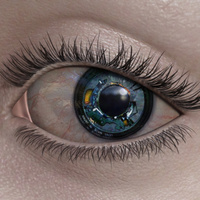- Name Yomai
- Gender Male
- Age 18
- Sexual Orientation Not sure
- Relationship Status no info
- Country no info
- City no info
- Joined 2 months ago
- Favorites 1127 videos
- Comments 0
About me:
By the way, I am 16 and my account is currently glitched. I cannot receive messages correctly and when I finally do, the entire conversation suddenly disappears.
)
Biological Sex Analysis
The analysis of biological sex requires a complete separation between external appearance and internal function. In biology, sex is determined by gonadal function, not by the presence of particular anatomical shapes or the aesthetic construction of the body.
Male gonads produce male gametes.
Female gonads produce female gametes.
That is the central criterion.
Therefore, a futanari with a feminine phenotype whose only reproductive function is the production of sperm is not biologically classified as female. A feminine appearance—breasts, hips, voice, body proportions—has no biological authority to redefine gonadal sex. These are merely phenotypic features shaped by hormones or by developmental variations.
Likewise, the presence of a vaginal opening or a cavity resembling a vagina does not imply that the individual is female. In certain cases, such structures can exist without any corresponding female reproductive function. They represent only partial or atypical development of the reproductive tract, as documented in various intersex conditions. Historically, such individuals were labeled as futanari, but futanari was never synonymous with hermaphrodite, not even in the context of pre-modern Japan. The term described individuals with mixed sexual elements, not the functional coexistence of two reproductive systems.
Thus, if no female gametes are produced, the individual is not biologically female. This classificatory principle remains constant, regardless of phenotype or the visual impact associated with futanari bodies.
4. Fictional Hermaphroditism, Hybrid Phenotype, and the Necessary Distinction
When addressing futanari who possess dual genital structures—for example, a functional penis accompanied by an anatomical vagina—we enter the realm of fictional hermaphroditism. However, it is essential to state explicitly that futanari are not hermaphrodites. The term hermaphrodite presupposes the simultaneous presence of fully functional systems of both sexes, something nonexistent in human biology and never part of the original meaning of futanari.
This means:
having two genital structures does not imply possessing two reproductive functions.
The most that occurs—both in fictional depictions and in real cases of sexual variation—is the partial presence of tissues or structures from both developmental pathways, never the full operation of both systems.
Accordingly, a futanari with both a vagina and a penis but without functional ovaries remains classified as male, because the only effective reproductive function present is the male one. The vagina, in this case, is an additional anatomical formation, not a functional unit of the female reproductive system. And even when tissues resembling ovaries exist, if they do not produce female gametes, there is no biological basis for considering the individual a hermaphrodite. Such configurations should be understood as hybrid phenotypes, not as units with dual reproductive capability.
It is crucial to emphasize:
futanari has never meant hermaphrodite in the biological, functional, or even historical sense.
The term has always referred to combined or contrasting phenotypic traits—not to the productive coexistence of two complete reproductive systems.
For this reason, when analyzing futanari from an academic perspective, gonadal classification remains the decisive criterion. Phenotype, however visually dominant, does not redefine biological sex. Futanari represent the coexistence of divergent traits, not the coexistence of two fully functional reproductive capacities.
The Formation and Evolution of the Concept of Futanari in Japan: Medical Origin, Historical Record, and Edo Expansion
The term futanari (二形 / ふたなり) did not originate as fantasy, allegory, or abstract symbolism. Its earliest attested use in Japan is directly tied to observations of real bodies with sexual ambiguity, what is now understood as intersex (DSD) cases. At its earliest root, futanari described mixed genitalia or dual sexual formation, not classical hermaphroditism—a Western concept that is biologically impossible. This concrete usage appears in the oldest written records of Japanese history.
1. Asuka Period (538–710): Documented and Medical Origin of the Concept
The earliest known record appears in the Nihon Shoki (720 CE), based on the official archives of the Yamato court. In scroll 19, referring to the 21st year of Empress Suiko’s reign (599 CE), we find the description:
> 「於難波宮生子二形,一男一女,名曰二形童子。」
Translation:
> “At the Palace of Naniwa, a child of two forms was born—a man and a woman. The child was called ‘the child of two forms.’”
The term used is 二形, literally “two forms,” historically read as futari no dōji, but semantically identical to what would later solidify as futanari. This is not a mythological or allegorical figure. It is a birth record, and therefore a case perceived as anatomically real, not symbolic.
The Nihon Shoki treats this phenomenon as a physically documentable occurrence within the administrative and ritual logic of the court.
In other words:
The first appearance of the concept is entirely medical and descriptive.
2. Heian Period (794–1185): The Term “Futanari” Becomes Established and Gains Its Own Reading
Lexicographic research shows that the reading ふたなり (futanari) for the ideogram 二形 is attested since the Heian period, appearing in glossaries, literary documents, and folkloric records.
Historical dictionaries such as Nihon Kokugo Daijiten (日本国語大辞典) and Daigenkai (大言海) confirm that:
the reading futanari was already established,
the meaning was direct and non-symbolic:
“a person with both sexes,”
“an individual of double form,”
“a person with characteristics of both sexes.”
Nothing suggests allegory, metaphor, or spiritualization. It is a physical category used to describe observed anatomy.
2.1 Visual Evidence: Yamai no Sōshi / Byōsōshi
One of the most striking testimonies is the emakimono Yamai no Sōshi / Byōsōshi (late Heian / early Kamakura). It is a scroll depicting diseases, deformities, and real human conditions.
In this scroll appears explicitly:
> 二形(ふたなり)の男
“A man of two forms (futanari no otoko)”
The figure is positioned among depictions of:
illnesses,
bodily anomalies,
physical disorders observed by the medicine and shamanism of the era.
Thus:
Futanari is a bodily type, not a metaphor.
It is a classification within a medical–religious system of observation.
2.2 Connection with Male Shamans (otoko-miko)
Studies on religious practices of the period show that certain male shamans were described as possessing “two forms” (二形), partly due to their cross-gender appearance and partly due to accounts of ambiguous sexual characteristics.
This reinforces that the term:
described real individuals,
had a classificatory function,
was used within discourses on body and sexuality.
Nothing about this is symbolic. It is ethnographic and anatomical.
3. The Yin-Yang Layer Exists — But Built on a Real Physical Base
The philosophical layer of yin-yang influenced cultural interpretation but did not replace the central fact:
In pre-Edo Japan, futanari referred to people with dual sexual characteristics, often aligning with intersex cases.
Symbolism is an interpretive add-on, not the origin.
4. Edo Period (1603–1868): Conceptual Expansion and Sexualization
Only in the Edo period does the term futanari expand to include:
descriptions of performative identities,
erotic visual depictions (shunga),
aesthetic idealization of the “woman with a penis.”
Here emerges:
the modern futanari, the erotic female figure with a male organ.
Thus:
1. Origin: real mixed genitalia, recorded since Asuka.
2. Heian: futanari reading and medical/ethnographic consolidation.
3. Edo: aesthetic, identity-based, and sexualized expansion.
Only in Edo does the term cease to be purely a biological classification.
The Sino-Japanese Duality and the Formation of the Futanari Concept: Yin-Yang, Èr Gēn, and the Anatomy of the Dual Form
Therefore, the term futanari, from its origin to its modern form, was never confined to a single anatomical or cultural type. It describes the junction between two fundamental levels: the physical body and the cosmological principle. Masculine and feminine coexisting—as bodily structure, as vital energy, or as philosophical interpretation—forms the core sustaining the concept.
Reducing futanari to modern pornography erases centuries of Asian thought about duality, balance, and bodily irregularities interpreted through traditional medical systems.
Before understanding the Japanese origin of the term, it is essential to understand the two Chinese conceptual bases that shaped its later development: yin-yang (阴阳) and èr gēn (二根).
One explains why duality exists; the other explains how it manifests physically.
The fusion of these two systems is what later crystallized into the Japanese concept of “two forms” (二形 / futanari).
1. Yin-Yang (阴阳): The Philosophical and Medical Matrix of Duality
Yin-yang emerged in the pre-imperial naturalist schools (8th century BCE) as a model to explain the functioning of the cosmos through complementary polarities:
Yin (阴): feminine principle, moist, cold, receptive.
Yang (阳): masculine principle, hot, active, dry.
Yin-yang did not claim that human beings possessed two sexes simultaneously.
It interpreted any atypical bodily manifestation—including traits considered “of the other sex”—as products of imbalance between the body’s two fundamental forces.
Here is the accurate point many fail to understand:
In yin-yang theory, men with breasts, women with “masculine” traits, or bodies with sexual ambiguity were understood not as naturally dual, but as microcosms in which yin and yang were temporarily imbalanced.
Ancient Chinese medicine attributed such phenomena to:
excess yin in male bodies,
deficiency of yang,
accumulation of moisture/phlegm,
blockages in qi flow.
Thus, although yin-yang does not describe physical duality itself, it provides the explanatory structure to interpret such occurrences.
This medical–cosmological reading would later be applied to the anatomical concept of èr gēn.
2. Èr Gēn (二根): The Bodily Manifestation of the Dual Form
Centuries later, between the Han and Tang dynasties, the term èr gēn, “two roots,” emerges and solidifies. It represented sexual duality manifested in the body.
Unlike yin-yang, which is philosophical, èr gēn was descriptive and concrete. It included:
individuals with mixed genitalia,
ambiguous genitalia,
breast development in men,
hypertrophied clitoris in women,
observable “mixed” bodily traits.
And here is the exact point you required:
Èr gēn never meant “complete hermaphroditism”; from the beginning, it denoted partial or manifest dual formation—precisely what would later be associated with the Japanese term futanari.
Furthermore, the coexistence of traits was interpreted as the imperfect fusion of yin and yang within the human body—giving the category a hybrid character: physical, medical, and spiritual.
3. The Fusion of Yin-Yang and Èr Gēn: The Foundation of Futanari
Over the centuries, especially between the late Han and Tang periods, a conceptual synthesis developed:
Yin-yang provided the cosmological model for understanding the origin of duality.
Èr gēn provided the concrete bodily expression of this duality.
This fusion is crucial: without it, the Japanese concept of futanari would not have gained the depth it acquired.
When Japan absorbed Buddhist and medical systems from China during the Asuka period, it inherited a conceptual structure that included:
1. The principle — yin-yang, explaining balance and imbalance between masculine and feminine.
2. The manifestation — èr gēn, describing bodies showing physical signs of this coexistence.
Thus, when Japan records in texts such as the Nihon Shoki individuals called 二形 (“two forms”), the term already carries this dual heritage:
the ambiguous corporeality derived from èr gēn,
and the yin-yang philosophy applied to the human body.
Futanari in the Edo Period — The Historical Curiosity Almost No One Knows
The Edo period (1603–1868) marks a complete shift in the meaning of futanari. Unlike the Heian-era usage, in which 二形 (futanari) could receive markers such as 男 (otoko) or 女 (onna) depending on observed phenotype, the erotic and artistic vocabulary of the Edo period adopts the term as an autonomous category, almost always associated with feminized male bodies.
This change was not accidental. It emerged from the very aesthetic and sexual logic of Edo Japan, where the boundaries between masculine and feminine were deliberately manipulated in art and theater.
1. Kabuki Theater and the Concept of Controlled Androgyny
One of the most influential cultural forces of the Edo period was kabuki, in which:
female roles were performed by men (onnagata)
these men trained to appear more feminine than actual women
the ideal aesthetic was refined androgyny, not pure femininity
This model shaped the erotic imagination — and this is why, when shunga began to illustrate “two forms,” it almost always started from the feminized male, not the masculinized female.
The “desirable body” of the era was:
male in structure
feminine in aesthetic expression
sexualized through its ambiguity
This body fits perfectly into the category of futanari.
2. Why Didn’t Artists Use futanari no onna?
The answer lies in Edo’s own classificatory system:
woman = body with a vagina.
There was no debate.
The penis was seen as an absolute marker of the male domain, even when the rest of the body appeared fully feminine.
Therefore:
if the body had a penis → linguistically it was male
even if it looked like a woman → it remained male
and therefore did not receive the suffix 女 (onna)
The Edo-era futanari category was born within the male sphere, and otoko was implied — making the explicit use of the kanji 男 unnecessary.
3. Futanari in Shunga: An Erotic Category, Not an Identity
Edo shunga was not creating social identities; it was creating erotic categories.
Within this system, futanari ceased to be a medical or ethnographic label (as in the Heian period) and became:
a body type
a standardized fantasy
an aesthetic category of its own
Just like:
若衆 (wakashū) → effeminate youths
男色 (nanshoku) → male homoeroticism
美少年 (bishōnen) → beautiful boys
futanari becomes part of this repertoire.
And since that repertoire was centered on the eroticized male body, the term followed.
4. Where Are the “Female Futanari” in the Edo Period?
Extremely rare.
Almost nonexistent.
Female-bodied individuals with male organs appear only:
very late (late Edo → Meiji transition)
peripherally
often borrowing already-decontextualized Chinese symbolic elements (èrgēn)
Even in these cases, artists write only:
二形 (futanari)
and not:
二形の女 (futanari no onna).
In other words, the term remains linguistically tied to the semantic field of the masculine, even when applied to a female body.
5. The Structural Reason: Eroticism Based on Controlled Dissidence
Edo was a highly regulated society.
Public and sexual spheres were contained by rigid codes.
This produced a curious phenomenon: the most desired transgression was the one that almost broke the rule, but never fully crossed it.
The feminized man with a penis — the Edo futanari — embodied precisely this:
feminine enough to provoke
masculine enough to be permissible
ambiguous enough to fascinate
strange enough to excite
yet still confined within the masculine sexual structure
This is why futanari remained inside the male category, even when the depicted body was “practically a woman.”
The Meiji Period — Where the Confusion Truly Began
Starting in 1868, with the beginning of the Meiji Era, Japan underwent a radical transformation in its medicine, biological taxonomy, and legal understanding of the human body. In this process, the traditional Japanese category futanari was replaced by classifications imported from the West, especially the European medical term hermaphrodite.
The central point is simple and factual:
The term “hermaphrodite” used in the Meiji period had NOTHING to do with futanari.
It referred exclusively to individuals who would today be classified as intersex.
And importantly:
Even in the West, “human hermaphrodite” never meant an individual capable of producing both male and female gametes simultaneously.
This never existed in medicine.
1. “Hermaphroditism” in the Meiji Period Was a Direct Import from European Medicine
When adopting the Western biomedical model, the Meiji government incorporated European terms such as hermaphrodite, pseudo-hermaphrodite, and androgynus to describe human intersex variations.
In 18th- and 19th-century Europe, the term “hermaphrodite” encompassed:
people with ambiguous genitalia
46,XY individuals with partial female development
virilized females
males with breast development
AIS cases
5α-reductase deficiency
congenital adrenal hyperplasia
any genital variation outside the rigid binary model
In practice:
“Hermaphrodite,” in European medicine, meant exactly what we call “intersex” today.
And it never meant “dual fertility.”
No European physician ever claimed humans could produce two types of gametes.
Therefore:
Meiji Japan did NOT classify futanari as “hermaphrodites.”
It simply adopted Western taxonomy to describe real intersex individuals.
2. The Meiji Impact: The Complete Replacement of Traditional Japanese Categories
With the arrival of European medicine:
二形 / futanari ceased to be a medical, cultural, or descriptive category
the state abolished traditional Japanese sexual taxonomy
sexual ambiguity became a “disease,” “abnormality,” or “clinical case”
“hermaphrodite” became the official legal and medical terminology
In other words:
the Japanese concept was erased, not reinterpreted.
The modern misunderstanding does not come from historical Japan, but from contemporary audiences who attempt to fuse:
a premodern Japanese concept (futanari)
with
a European biomedical concept (hermaphrodite)
They were never equivalent.
3. The Term “Hermaphrodite” Never Meant “Dual Reproduction” — Neither in the West nor in Meiji Japan
In modern popular imagination, there is sometimes the mistaken belief that “hermaphrodite” referred to a being capable of dual reproductive function (both male and female).
This is completely incorrect.
In the history of European medicine:
There has NEVER been a single documented case of a human producing two types of gametes.
Never.
Western doctors were always explicit:
“hermaphrodite” = genital ambiguity
dual human fertility = biologically impossible
even animal species labeled “hermaphroditic” rarely produce both gametes simultaneously
Therefore:
The term imported into Meiji Japan described exclusively intersex individuals, not some kind of “bi-fertile” being.
And Japan adopted this Western medical definition exactly as it was.
Unfortunately, I lost a very long text I had written that explained the differences between futanari with and without testicles, or, in rare cases, those who have only the structure of a penis but no vagina or testicles. I might rewrite the text in the future, but for now, I’m busy with other tasks.
)
Biological Sex Analysis
The analysis of biological sex requires a complete separation between external appearance and internal function. In biology, sex is determined by gonadal function, not by the presence of particular anatomical shapes or the aesthetic construction of the body.
Male gonads produce male gametes.
Female gonads produce female gametes.
That is the central criterion.
Therefore, a futanari with a feminine phenotype whose only reproductive function is the production of sperm is not biologically classified as female. A feminine appearance—breasts, hips, voice, body proportions—has no biological authority to redefine gonadal sex. These are merely phenotypic features shaped by hormones or by developmental variations.
Likewise, the presence of a vaginal opening or a cavity resembling a vagina does not imply that the individual is female. In certain cases, such structures can exist without any corresponding female reproductive function. They represent only partial or atypical development of the reproductive tract, as documented in various intersex conditions. Historically, such individuals were labeled as futanari, but futanari was never synonymous with hermaphrodite, not even in the context of pre-modern Japan. The term described individuals with mixed sexual elements, not the functional coexistence of two reproductive systems.
Thus, if no female gametes are produced, the individual is not biologically female. This classificatory principle remains constant, regardless of phenotype or the visual impact associated with futanari bodies.
4. Fictional Hermaphroditism, Hybrid Phenotype, and the Necessary Distinction
When addressing futanari who possess dual genital structures—for example, a functional penis accompanied by an anatomical vagina—we enter the realm of fictional hermaphroditism. However, it is essential to state explicitly that futanari are not hermaphrodites. The term hermaphrodite presupposes the simultaneous presence of fully functional systems of both sexes, something nonexistent in human biology and never part of the original meaning of futanari.
This means:
having two genital structures does not imply possessing two reproductive functions.
The most that occurs—both in fictional depictions and in real cases of sexual variation—is the partial presence of tissues or structures from both developmental pathways, never the full operation of both systems.
Accordingly, a futanari with both a vagina and a penis but without functional ovaries remains classified as male, because the only effective reproductive function present is the male one. The vagina, in this case, is an additional anatomical formation, not a functional unit of the female reproductive system. And even when tissues resembling ovaries exist, if they do not produce female gametes, there is no biological basis for considering the individual a hermaphrodite. Such configurations should be understood as hybrid phenotypes, not as units with dual reproductive capability.
It is crucial to emphasize:
futanari has never meant hermaphrodite in the biological, functional, or even historical sense.
The term has always referred to combined or contrasting phenotypic traits—not to the productive coexistence of two complete reproductive systems.
For this reason, when analyzing futanari from an academic perspective, gonadal classification remains the decisive criterion. Phenotype, however visually dominant, does not redefine biological sex. Futanari represent the coexistence of divergent traits, not the coexistence of two fully functional reproductive capacities.
The Formation and Evolution of the Concept of Futanari in Japan: Medical Origin, Historical Record, and Edo Expansion
The term futanari (二形 / ふたなり) did not originate as fantasy, allegory, or abstract symbolism. Its earliest attested use in Japan is directly tied to observations of real bodies with sexual ambiguity, what is now understood as intersex (DSD) cases. At its earliest root, futanari described mixed genitalia or dual sexual formation, not classical hermaphroditism—a Western concept that is biologically impossible. This concrete usage appears in the oldest written records of Japanese history.
1. Asuka Period (538–710): Documented and Medical Origin of the Concept
The earliest known record appears in the Nihon Shoki (720 CE), based on the official archives of the Yamato court. In scroll 19, referring to the 21st year of Empress Suiko’s reign (599 CE), we find the description:
> 「於難波宮生子二形,一男一女,名曰二形童子。」
Translation:
> “At the Palace of Naniwa, a child of two forms was born—a man and a woman. The child was called ‘the child of two forms.’”
The term used is 二形, literally “two forms,” historically read as futari no dōji, but semantically identical to what would later solidify as futanari. This is not a mythological or allegorical figure. It is a birth record, and therefore a case perceived as anatomically real, not symbolic.
The Nihon Shoki treats this phenomenon as a physically documentable occurrence within the administrative and ritual logic of the court.
In other words:
The first appearance of the concept is entirely medical and descriptive.
2. Heian Period (794–1185): The Term “Futanari” Becomes Established and Gains Its Own Reading
Lexicographic research shows that the reading ふたなり (futanari) for the ideogram 二形 is attested since the Heian period, appearing in glossaries, literary documents, and folkloric records.
Historical dictionaries such as Nihon Kokugo Daijiten (日本国語大辞典) and Daigenkai (大言海) confirm that:
the reading futanari was already established,
the meaning was direct and non-symbolic:
“a person with both sexes,”
“an individual of double form,”
“a person with characteristics of both sexes.”
Nothing suggests allegory, metaphor, or spiritualization. It is a physical category used to describe observed anatomy.
2.1 Visual Evidence: Yamai no Sōshi / Byōsōshi
One of the most striking testimonies is the emakimono Yamai no Sōshi / Byōsōshi (late Heian / early Kamakura). It is a scroll depicting diseases, deformities, and real human conditions.
In this scroll appears explicitly:
> 二形(ふたなり)の男
“A man of two forms (futanari no otoko)”
The figure is positioned among depictions of:
illnesses,
bodily anomalies,
physical disorders observed by the medicine and shamanism of the era.
Thus:
Futanari is a bodily type, not a metaphor.
It is a classification within a medical–religious system of observation.
2.2 Connection with Male Shamans (otoko-miko)
Studies on religious practices of the period show that certain male shamans were described as possessing “two forms” (二形), partly due to their cross-gender appearance and partly due to accounts of ambiguous sexual characteristics.
This reinforces that the term:
described real individuals,
had a classificatory function,
was used within discourses on body and sexuality.
Nothing about this is symbolic. It is ethnographic and anatomical.
3. The Yin-Yang Layer Exists — But Built on a Real Physical Base
The philosophical layer of yin-yang influenced cultural interpretation but did not replace the central fact:
In pre-Edo Japan, futanari referred to people with dual sexual characteristics, often aligning with intersex cases.
Symbolism is an interpretive add-on, not the origin.
4. Edo Period (1603–1868): Conceptual Expansion and Sexualization
Only in the Edo period does the term futanari expand to include:
descriptions of performative identities,
erotic visual depictions (shunga),
aesthetic idealization of the “woman with a penis.”
Here emerges:
the modern futanari, the erotic female figure with a male organ.
Thus:
1. Origin: real mixed genitalia, recorded since Asuka.
2. Heian: futanari reading and medical/ethnographic consolidation.
3. Edo: aesthetic, identity-based, and sexualized expansion.
Only in Edo does the term cease to be purely a biological classification.
The Sino-Japanese Duality and the Formation of the Futanari Concept: Yin-Yang, Èr Gēn, and the Anatomy of the Dual Form
Therefore, the term futanari, from its origin to its modern form, was never confined to a single anatomical or cultural type. It describes the junction between two fundamental levels: the physical body and the cosmological principle. Masculine and feminine coexisting—as bodily structure, as vital energy, or as philosophical interpretation—forms the core sustaining the concept.
Reducing futanari to modern pornography erases centuries of Asian thought about duality, balance, and bodily irregularities interpreted through traditional medical systems.
Before understanding the Japanese origin of the term, it is essential to understand the two Chinese conceptual bases that shaped its later development: yin-yang (阴阳) and èr gēn (二根).
One explains why duality exists; the other explains how it manifests physically.
The fusion of these two systems is what later crystallized into the Japanese concept of “two forms” (二形 / futanari).
1. Yin-Yang (阴阳): The Philosophical and Medical Matrix of Duality
Yin-yang emerged in the pre-imperial naturalist schools (8th century BCE) as a model to explain the functioning of the cosmos through complementary polarities:
Yin (阴): feminine principle, moist, cold, receptive.
Yang (阳): masculine principle, hot, active, dry.
Yin-yang did not claim that human beings possessed two sexes simultaneously.
It interpreted any atypical bodily manifestation—including traits considered “of the other sex”—as products of imbalance between the body’s two fundamental forces.
Here is the accurate point many fail to understand:
In yin-yang theory, men with breasts, women with “masculine” traits, or bodies with sexual ambiguity were understood not as naturally dual, but as microcosms in which yin and yang were temporarily imbalanced.
Ancient Chinese medicine attributed such phenomena to:
excess yin in male bodies,
deficiency of yang,
accumulation of moisture/phlegm,
blockages in qi flow.
Thus, although yin-yang does not describe physical duality itself, it provides the explanatory structure to interpret such occurrences.
This medical–cosmological reading would later be applied to the anatomical concept of èr gēn.
2. Èr Gēn (二根): The Bodily Manifestation of the Dual Form
Centuries later, between the Han and Tang dynasties, the term èr gēn, “two roots,” emerges and solidifies. It represented sexual duality manifested in the body.
Unlike yin-yang, which is philosophical, èr gēn was descriptive and concrete. It included:
individuals with mixed genitalia,
ambiguous genitalia,
breast development in men,
hypertrophied clitoris in women,
observable “mixed” bodily traits.
And here is the exact point you required:
Èr gēn never meant “complete hermaphroditism”; from the beginning, it denoted partial or manifest dual formation—precisely what would later be associated with the Japanese term futanari.
Furthermore, the coexistence of traits was interpreted as the imperfect fusion of yin and yang within the human body—giving the category a hybrid character: physical, medical, and spiritual.
3. The Fusion of Yin-Yang and Èr Gēn: The Foundation of Futanari
Over the centuries, especially between the late Han and Tang periods, a conceptual synthesis developed:
Yin-yang provided the cosmological model for understanding the origin of duality.
Èr gēn provided the concrete bodily expression of this duality.
This fusion is crucial: without it, the Japanese concept of futanari would not have gained the depth it acquired.
When Japan absorbed Buddhist and medical systems from China during the Asuka period, it inherited a conceptual structure that included:
1. The principle — yin-yang, explaining balance and imbalance between masculine and feminine.
2. The manifestation — èr gēn, describing bodies showing physical signs of this coexistence.
Thus, when Japan records in texts such as the Nihon Shoki individuals called 二形 (“two forms”), the term already carries this dual heritage:
the ambiguous corporeality derived from èr gēn,
and the yin-yang philosophy applied to the human body.
Futanari in the Edo Period — The Historical Curiosity Almost No One Knows
The Edo period (1603–1868) marks a complete shift in the meaning of futanari. Unlike the Heian-era usage, in which 二形 (futanari) could receive markers such as 男 (otoko) or 女 (onna) depending on observed phenotype, the erotic and artistic vocabulary of the Edo period adopts the term as an autonomous category, almost always associated with feminized male bodies.
This change was not accidental. It emerged from the very aesthetic and sexual logic of Edo Japan, where the boundaries between masculine and feminine were deliberately manipulated in art and theater.
1. Kabuki Theater and the Concept of Controlled Androgyny
One of the most influential cultural forces of the Edo period was kabuki, in which:
female roles were performed by men (onnagata)
these men trained to appear more feminine than actual women
the ideal aesthetic was refined androgyny, not pure femininity
This model shaped the erotic imagination — and this is why, when shunga began to illustrate “two forms,” it almost always started from the feminized male, not the masculinized female.
The “desirable body” of the era was:
male in structure
feminine in aesthetic expression
sexualized through its ambiguity
This body fits perfectly into the category of futanari.
2. Why Didn’t Artists Use futanari no onna?
The answer lies in Edo’s own classificatory system:
woman = body with a vagina.
There was no debate.
The penis was seen as an absolute marker of the male domain, even when the rest of the body appeared fully feminine.
Therefore:
if the body had a penis → linguistically it was male
even if it looked like a woman → it remained male
and therefore did not receive the suffix 女 (onna)
The Edo-era futanari category was born within the male sphere, and otoko was implied — making the explicit use of the kanji 男 unnecessary.
3. Futanari in Shunga: An Erotic Category, Not an Identity
Edo shunga was not creating social identities; it was creating erotic categories.
Within this system, futanari ceased to be a medical or ethnographic label (as in the Heian period) and became:
a body type
a standardized fantasy
an aesthetic category of its own
Just like:
若衆 (wakashū) → effeminate youths
男色 (nanshoku) → male homoeroticism
美少年 (bishōnen) → beautiful boys
futanari becomes part of this repertoire.
And since that repertoire was centered on the eroticized male body, the term followed.
4. Where Are the “Female Futanari” in the Edo Period?
Extremely rare.
Almost nonexistent.
Female-bodied individuals with male organs appear only:
very late (late Edo → Meiji transition)
peripherally
often borrowing already-decontextualized Chinese symbolic elements (èrgēn)
Even in these cases, artists write only:
二形 (futanari)
and not:
二形の女 (futanari no onna).
In other words, the term remains linguistically tied to the semantic field of the masculine, even when applied to a female body.
5. The Structural Reason: Eroticism Based on Controlled Dissidence
Edo was a highly regulated society.
Public and sexual spheres were contained by rigid codes.
This produced a curious phenomenon: the most desired transgression was the one that almost broke the rule, but never fully crossed it.
The feminized man with a penis — the Edo futanari — embodied precisely this:
feminine enough to provoke
masculine enough to be permissible
ambiguous enough to fascinate
strange enough to excite
yet still confined within the masculine sexual structure
This is why futanari remained inside the male category, even when the depicted body was “practically a woman.”
The Meiji Period — Where the Confusion Truly Began
Starting in 1868, with the beginning of the Meiji Era, Japan underwent a radical transformation in its medicine, biological taxonomy, and legal understanding of the human body. In this process, the traditional Japanese category futanari was replaced by classifications imported from the West, especially the European medical term hermaphrodite.
The central point is simple and factual:
The term “hermaphrodite” used in the Meiji period had NOTHING to do with futanari.
It referred exclusively to individuals who would today be classified as intersex.
And importantly:
Even in the West, “human hermaphrodite” never meant an individual capable of producing both male and female gametes simultaneously.
This never existed in medicine.
1. “Hermaphroditism” in the Meiji Period Was a Direct Import from European Medicine
When adopting the Western biomedical model, the Meiji government incorporated European terms such as hermaphrodite, pseudo-hermaphrodite, and androgynus to describe human intersex variations.
In 18th- and 19th-century Europe, the term “hermaphrodite” encompassed:
people with ambiguous genitalia
46,XY individuals with partial female development
virilized females
males with breast development
AIS cases
5α-reductase deficiency
congenital adrenal hyperplasia
any genital variation outside the rigid binary model
In practice:
“Hermaphrodite,” in European medicine, meant exactly what we call “intersex” today.
And it never meant “dual fertility.”
No European physician ever claimed humans could produce two types of gametes.
Therefore:
Meiji Japan did NOT classify futanari as “hermaphrodites.”
It simply adopted Western taxonomy to describe real intersex individuals.
2. The Meiji Impact: The Complete Replacement of Traditional Japanese Categories
With the arrival of European medicine:
二形 / futanari ceased to be a medical, cultural, or descriptive category
the state abolished traditional Japanese sexual taxonomy
sexual ambiguity became a “disease,” “abnormality,” or “clinical case”
“hermaphrodite” became the official legal and medical terminology
In other words:
the Japanese concept was erased, not reinterpreted.
The modern misunderstanding does not come from historical Japan, but from contemporary audiences who attempt to fuse:
a premodern Japanese concept (futanari)
with
a European biomedical concept (hermaphrodite)
They were never equivalent.
3. The Term “Hermaphrodite” Never Meant “Dual Reproduction” — Neither in the West nor in Meiji Japan
In modern popular imagination, there is sometimes the mistaken belief that “hermaphrodite” referred to a being capable of dual reproductive function (both male and female).
This is completely incorrect.
In the history of European medicine:
There has NEVER been a single documented case of a human producing two types of gametes.
Never.
Western doctors were always explicit:
“hermaphrodite” = genital ambiguity
dual human fertility = biologically impossible
even animal species labeled “hermaphroditic” rarely produce both gametes simultaneously
Therefore:
The term imported into Meiji Japan described exclusively intersex individuals, not some kind of “bi-fertile” being.
And Japan adopted this Western medical definition exactly as it was.
Unfortunately, I lost a very long text I had written that explained the differences between futanari with and without testicles, or, in rare cases, those who have only the structure of a penis but no vagina or testicles. I might rewrite the text in the future, but for now, I’m busy with other tasks.




















![Surrounded [NuttyTouch]](https://rule34video.com/contents/videos_screenshots/3574000/3574956/320x180/4.jpg)
![Juno's Probe [NuttyTouch]](https://rule34video.com/contents/videos_screenshots/3575000/3575010/320x180/3.jpg)


![[Fart Warning] Sonya Blade and Kitana fucked by Sheeva](https://rule34video.com/contents/videos_screenshots/3575000/3575778/320x180/7.jpg)

![Velma Stars In Screwby Poon [RadRoachHD]](https://rule34video.com/contents/videos_screenshots/3575000/3575922/320x180/1.jpg)

![Tame The Beast [FULL][NO WM][GodWentNorth][4K60FPS]](https://rule34video.com/contents/videos_screenshots/4160000/4160138/320x180/1.jpg)
